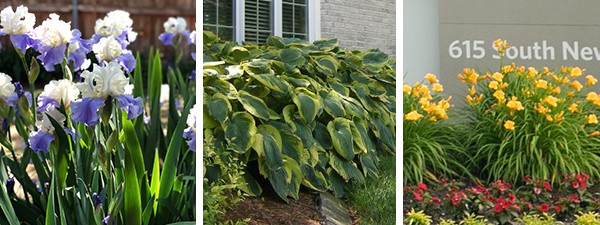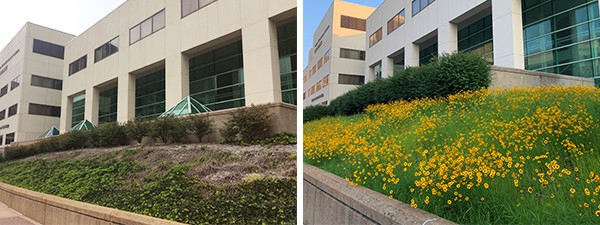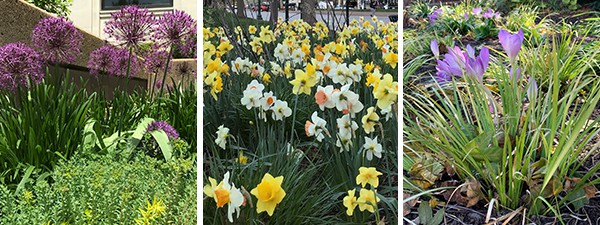Enhancing landscapes adds to both the value and our enjoyment of commercial and residential properties. And, while it seems there is always more that can be done, the funds to do so are sometimes short. To help bridge the desire to improve landscapes with budget constraints, we have put together a few cost-saving ideas for property enhancement that owners and managers can use to make wise investments in their property.

Utilize what you have – Late winter into spring is a great time to divide and transplant perennials and grasses. Look around to find perennials that are performing well on your site. Most can be divided and used to fill in other areas. Distribute them around your site for a more harmonious appearance. Many perennials benefit from division every 3-5 years to promote better health and more blooms. Some common perennials that are easily divided include ornamental grasses, daylilies, iris, hosta, yarrow, asters, and black-eyed Susan.

Plant smaller – Everyone wants immediate impact, but generally smaller plants establish quicker and with less stress than larger plants. A ten-gallon tree typically surpasses a much bigger 3” caliper balled-and-burlapped tree within 3-5 years. The same concept can be applied to perennials by purchasing plugs or quarts, instead of the larger gallon and multi-gallon specimens. While smaller plants are not practical for all projects, they are a valuable option in many situations.

Sow Seeds – Wildflower patches are becoming more popular, and seeds are a great way to start as they offer the most diversity in species and are more economical. If you do not want a wild look selecting just one or perhaps a few varieties in a mix will provide a more formal look. Also seeding behind a short hedge or formal landscape can give the impression of order upfront. Try some of these quick establishing varieties: plains coreopsis, sideoats, grama grass, anise hyssop, and golden Alexander.

Think beyond Tulips – Bulbs are one of the most economical ways to add more color to your landscape. When people think about bulbs many will first think of Tulips. While they are beautiful, Tulips are typically planted like annuals because they will not persist in the Midwest landscape. Tulips have their place in high-impact seasonal areas, but there is a long list of perennial bulbs commercially available that can be used in perennial beds. Some great options are daffodils, wild hyacinths, glory of the snow, crocus, winter aconite, English bluebells, allium, surprise lily, and Autumn crocus. Most bulbs need good drainage, so consider that in placement.
Rejuvenation – Have some overgrown shrubs or multi-stem trees? Instead of paying for removal and replacement consider rejuvenation pruning. This type of pruning, also called coppicing is cutting the specimen back to (or near) the ground. Early spring is a great time for this before the foliage emerges. Shrubs that can be pruned this way include red-twig dogwood, shrub willows, viburnum, hydrangea, spirea, lilac, and even holly. Spring grow back is typically quick for most species, with holly taking the longest. Small trees that can be pruned this way included serviceberry and redbud. It is important to structure prune to develop better shape after grow-back has started.
When enhancing any landscape area, we always consider the whole property and design principles that bring harmony to the landscape. Please reach out if you would like to make landscape enhancements around your property but have concerns about budget limits. We will be happy to walk your property with you and point out where some of these low-budget and high-value ideas may be employed.
